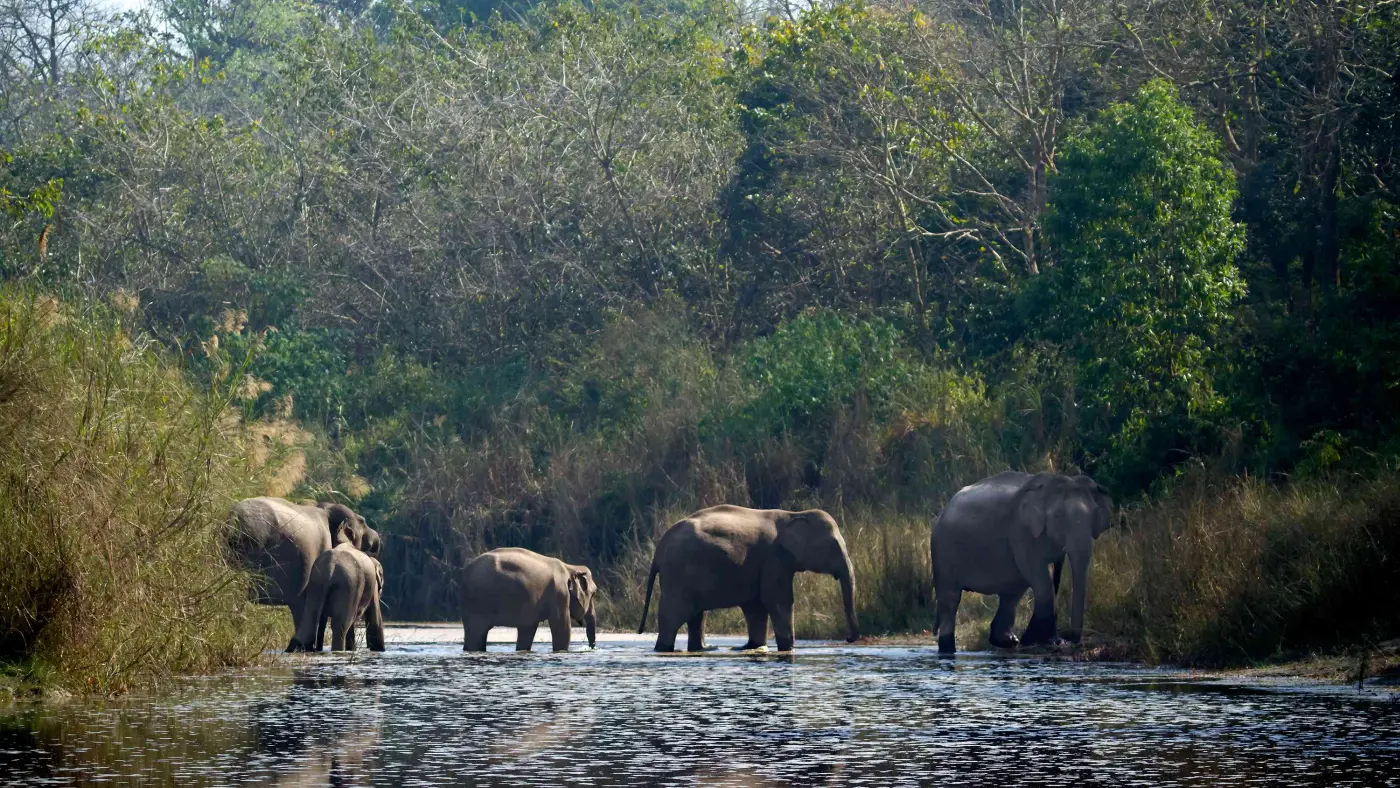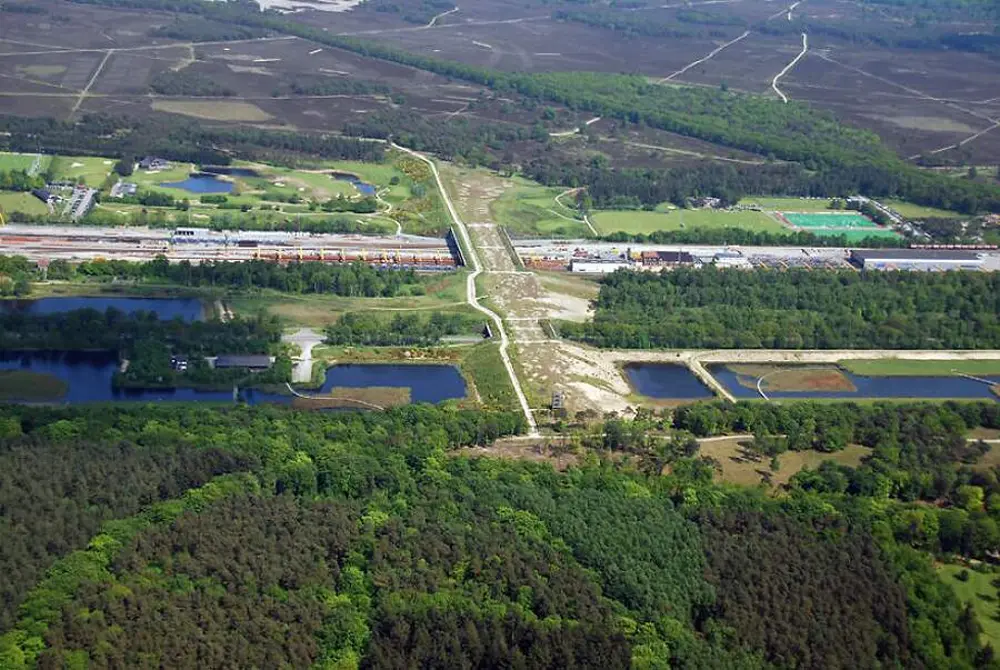The Pros and Cons of Wildlife Corridors & How They Affect Animals
While wildlife or habitat corridors have many benefits such as joining the fragmented habitats, there could be many unintended negative effects as well
Wildlife corridors have emerged as a solution to conjoin the habitats that have been fragmented by human settlements, anthropogenic activities and expanding farmlands. Also known as migration or habitat corridors, wildlife corridors help the animals to move back and forth from one place to another. However, there are many cons of wildlife corridors as there are pros.
With increasing human intrusion, wildlife corridors have become a necessity in order to provide safe passage and migration routes to wild animals. Moreover, highways cutting through crucial paths often lead to unwanted human-animal conflicts, with a high risk of life loss on both sides.

Image: MNN
Evidently, in regions where wild habitats are fractured by urbanization, cattle grazing, and deforestation and so on, animals require a natural temporarily sustainable pathway to move and migrate in order to prevent either the chances of inbreeding or overexploitation of prey. The pros and cons of wildlife corridors can sometimes cripple the construct that is supposed to conserve crucial habitats and endangered species.
Also Read: 26 Important Wildlife Corridors Across the Globe
The earliest victims of habitat fragmentation are the big predators who rely on roaming. When large carnivores cannot travel to find new mates or different prey base, they begin to suffer a genetic breakdown. This becomes the precursor to extinction. Wildlife corridors can help avert these catastrophic consequences of habitat loss.
Here we are going to discuss the pros and cons of wildlife corridors and how they affect animals.
Pros of Wildlife Corridors
Wildlife corridors are now in vogue amidst the high-speed climate change. They have become a key part of many governments’ species recovery plans as they are helping revive a huge number of rare animals across the globe.
With rising temperatures and other environmental changes, many species are forced to adapt by moving to cooler, higher, wetter or drier habitats. Habitat corridors offer pathways for animals to migrate amid such circumstances. Here are some of the benefits of wildlife corridors.
They Actually Work
Scientists have long indicated that it is better for species to have large, unbroken habitats rather than isolated bits. However, it has taken a long time for humankind to realize. The recent decline in the population of wildlife species has offered plenty of data to prove that corridors actually work. From Amur leopards and Florida panthers to giant pandas and African elephants, wildlife corridors have helped boost the species populace.
Offer Crucial Connectivity
The connectivity between fragmented wildlife habitats is one of the foremost benefits of corridors. Various models of core areas, movement corridors and buffer zones are key for the long-term survival and conservation of wildlife species both flora and fauna. They not only help animals move between isolated patches frequently but also a safe passage for migration as well.

Image: Atlas Obscura
Enhanced Immigration
Wildlife corridors permit an increased gene flow between small and patchy wild populations. They help them in migrating from one place to another safely, which is important for maintaining biodiversity through the conservation of potentially threatened populations in the wild. The enhanced immigration can help in pollination and seed distribution alongside of enhancing the gene pool.
Adaptation and Accommodation amid Climate Change
As the threat of climate change increases, wild animals are becoming more and more vulnerable. Wildlife corridors offer a chance of adaptation and accommodation amid changing climatic conditions and their adverse effects that are disrupting natural habitats and prey bases for many species. These passages allow animals to move around in search of shelter and food without endangering their lives by crossing through highways or railway tracks.
Ecological Maintenance
These habitat corridors are crucial to maintaining the ecology of a natural setting. As scientists have many times indicated that it is better to maintain the landscape in a connected way rather than letting patched islands form around us. These pathways connect the patched areas and glue a landscape together and prevent fragmentation. This way animals can move around for breeding and feeding without losing their natural habitat.
Averting Man-Animal Conflicts
Man-animal conflicts have been a huge issue, resulting in death and destruction on both sides. With the increasing encroachment of forests by human settlements, wild habitats are shrinking at an alarming rate. Consequently, animals are wandering into human establishments in search of food and that is where the problem arises. Wildlife corridors avert this problem by providing a wild and safe path to animals, without any human presence, where they can roam around freely.

Image: Times of India
Cons of Wildlife Corridors
Despite the positive conservation impact of wildlife corridors, concerns persist that these corridors can have unintended negative effects for animals and other wildlife species. There are many potential cons of wildlife corridors that could outweigh their pros.
Also Read: 7 Important Wildlife Corridors in India Safeguarding Species
There are many vital concerns about wildlife corridors that can adversely affect flora and fauna species, pushing them towards extinction instead of conserving them. Wildlife corridors can spike the populations of invasive species, potentially endangering the native species. Here are some negative effects of wildlife corridors.
Dispersal of Antagonistic Species
While it is meant to connect dispersed habitats, corridor connectivity may also help the spread of unwanted and harmful antagonistic species as well. For example, they can increase the spread of hostile species such as raccoons that depredate bird nests. This dispersal of hostile species can have the undesired effect that wildlife corridors are trying to prevent in the first place.
Negative Edge Effects
Edge effects are the alternations in population or community structure in ecology that occur at the boundary of two or more habitats. This could have adverse consequences due to wildlife corridors. Negative edge effects include increased risk of parasitism or disease, adverse microclimate conditions and other effects that can be harmful to the species that are being protected through the construct of wildlife corridors.
Spread of Invasive Species
Wildlife corridors can aid invasive species to spread throughout a crucial habitat, damaging the native ecology. For example, fire ants are a noxious species in the southern United States and are spreading globally. These are alike many invasive species, known to have pushed many species away from their local habitats. Invasive species spread can endanger the endemic species and push them further toward extinction.
Increased Risk of Fires
Various studies and analyses have revealed that corridors alter patterns of fire temperatures through a direct connectivity effect and an indirect edge effect. Connectivity provides a link between hotter-burning plots and fueling wind flow. Experts recommend to consider corridor impacts on fire carefully during landscape management, both in the context of how these pathways connect and break distributions of fuels and the role of fire.

Image: Noah Berger/AP
Increased Rise of Predation
Increased predation rates are one of the main concerns about corridors. Apparently, if the prey is dispersed through habitat corridors, a predator has the advantage of this bottleneck event to attack. Although it is without scientific support, the point certainly is a valid one. The complex relationship between predation and corridors can leave the prey bases exposed and vulnerable amid certain situations.
Difficulty to Maintain Size
Another concern about wildlife corridors is the size in which they are introduced into the wild. The area size of the corridor is crucial to consider in accordance with all the species in multiple habitats that are being connected. If an area size works for a certain species, it is not necessary that it will be suitable for another species. While planning landscape management, it is important to take these things into consideration, otherwise, these pathways can be rendered useless.


